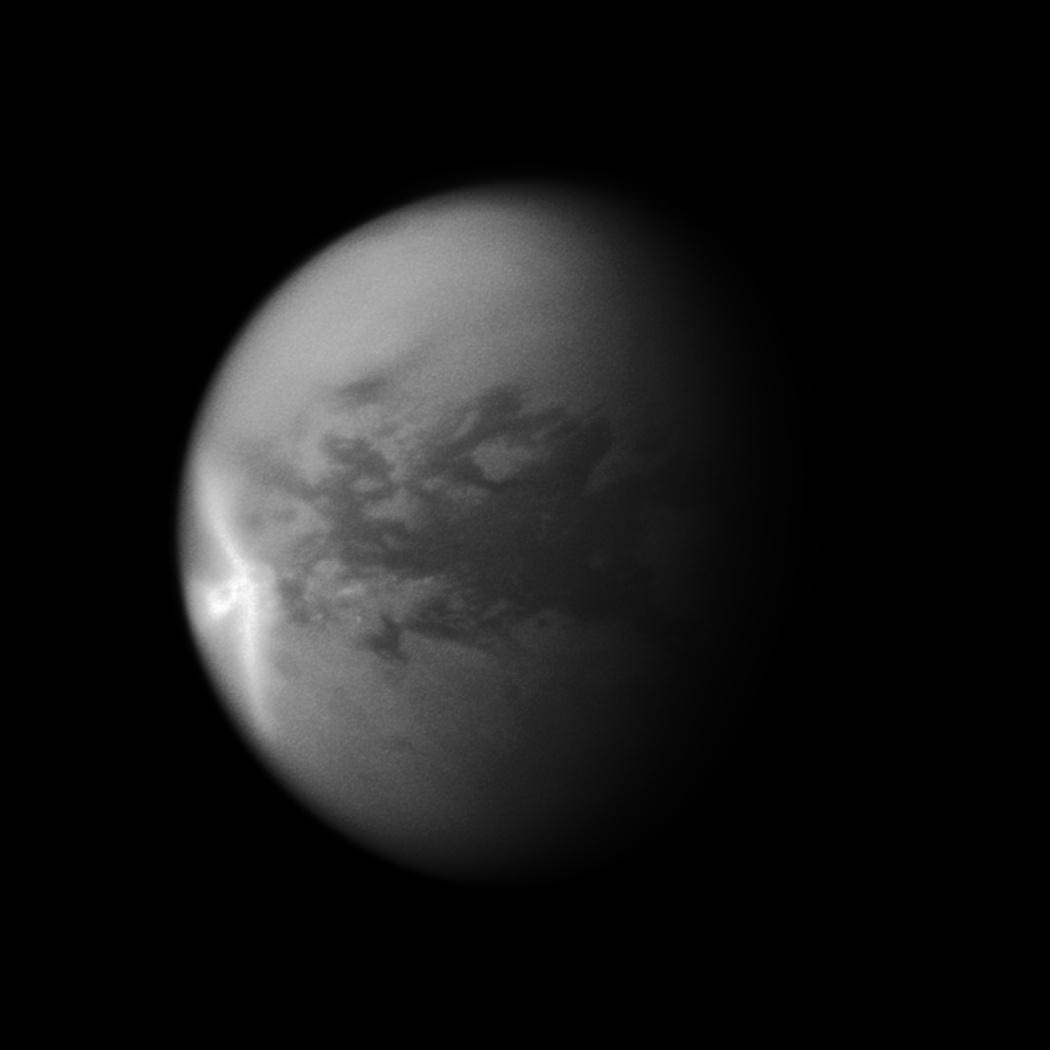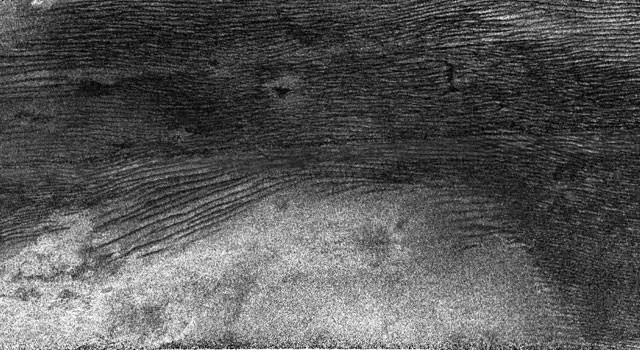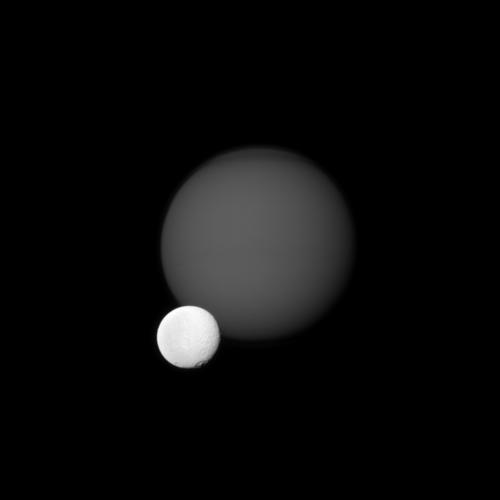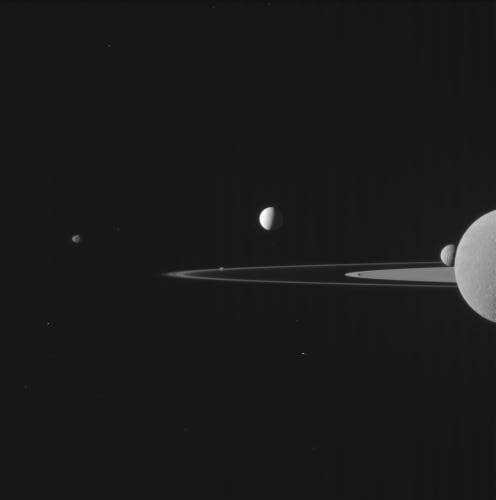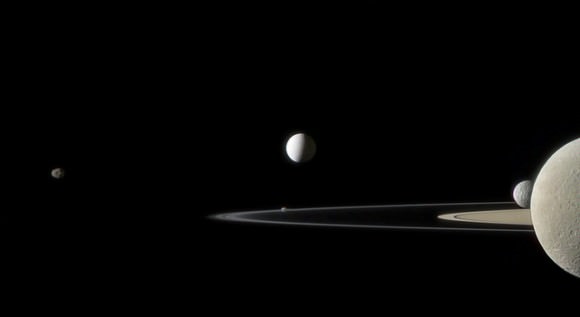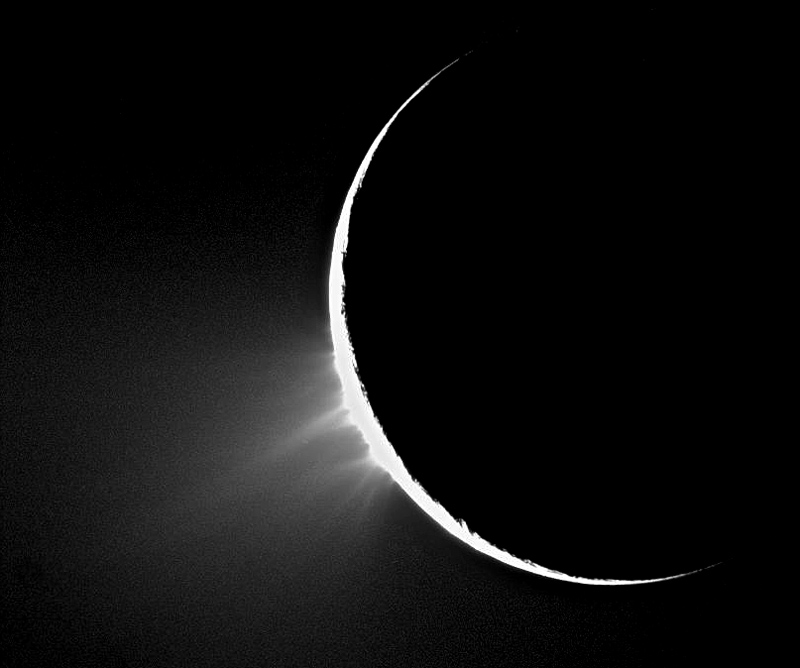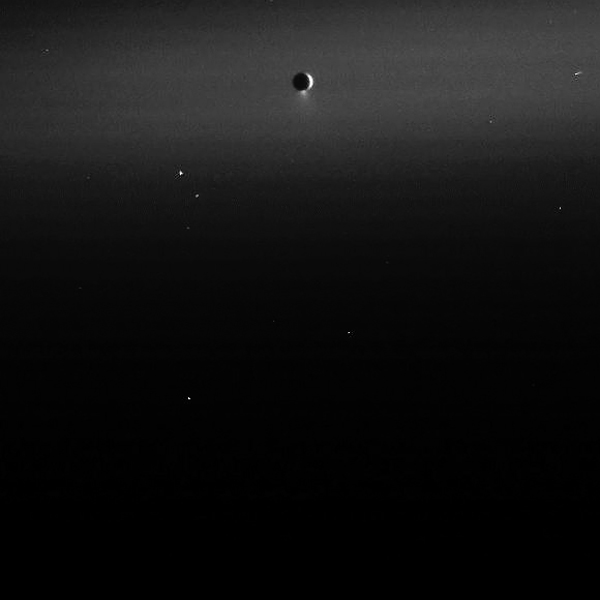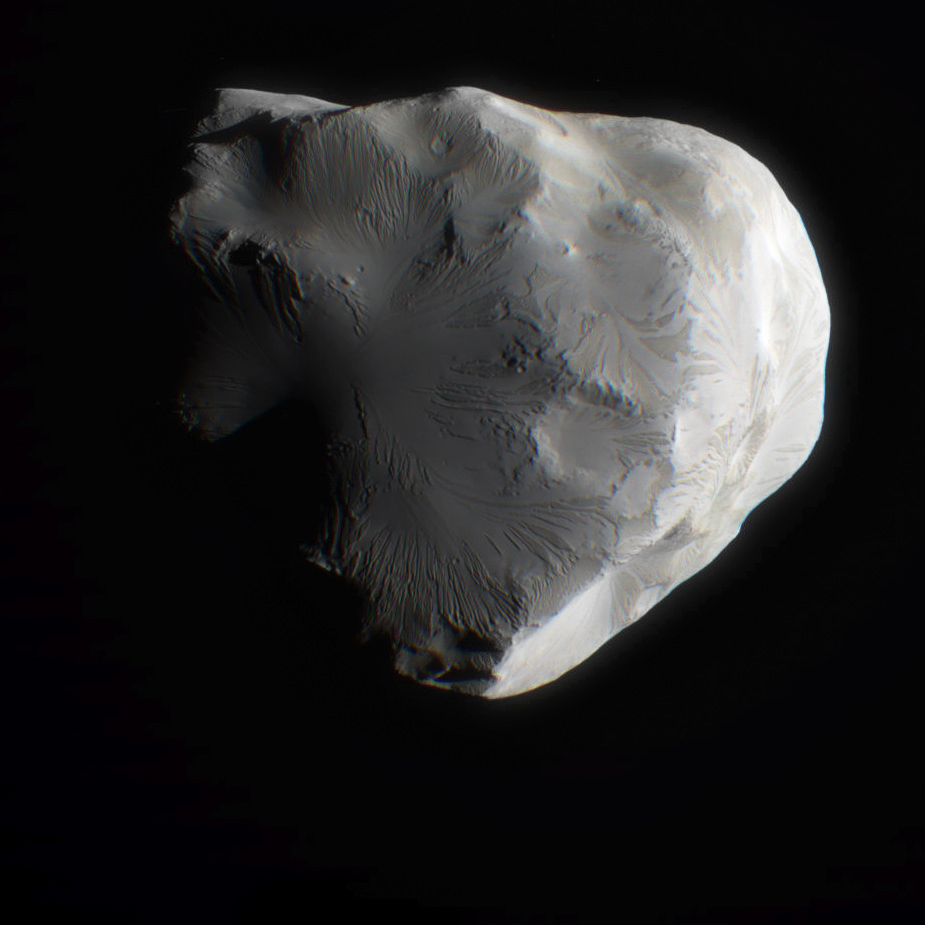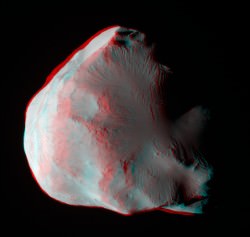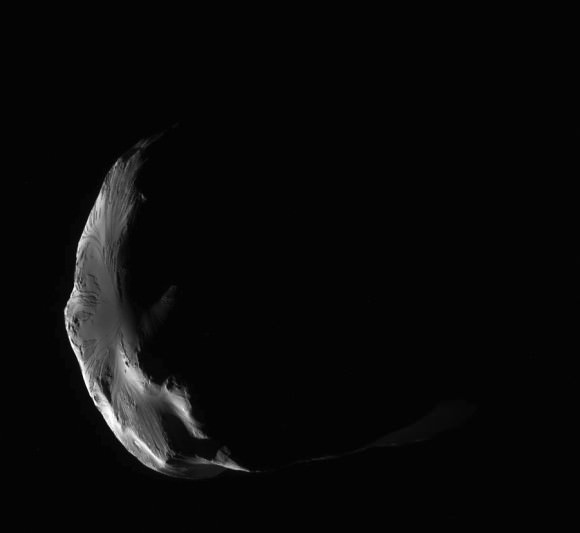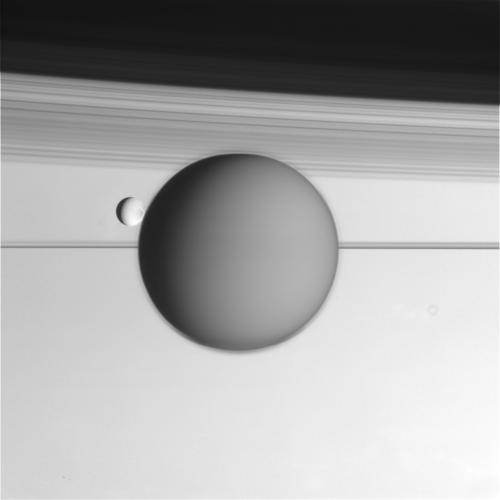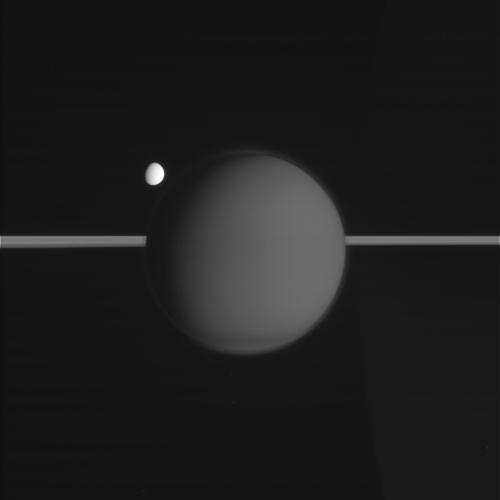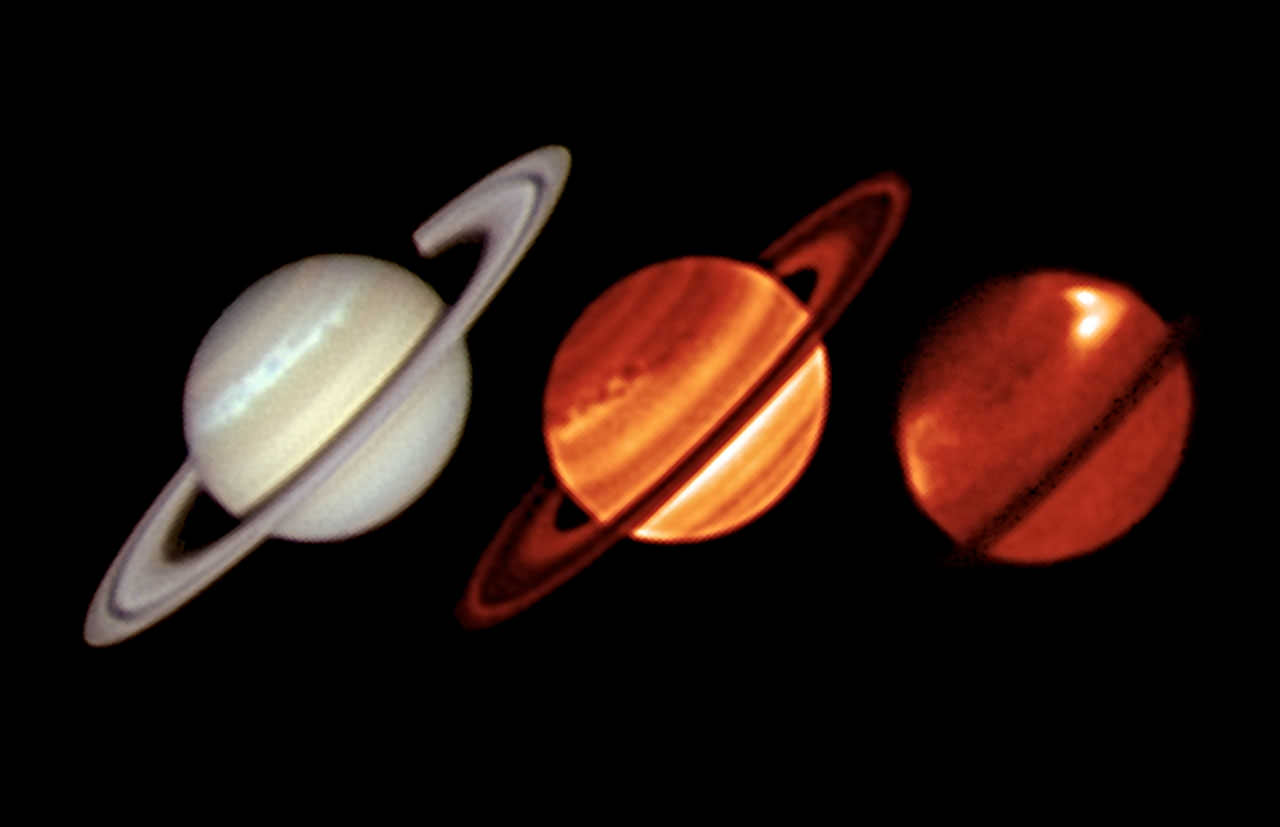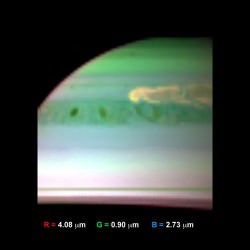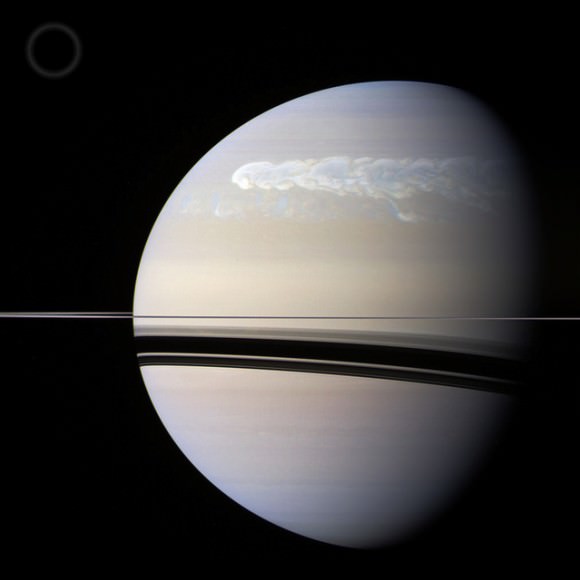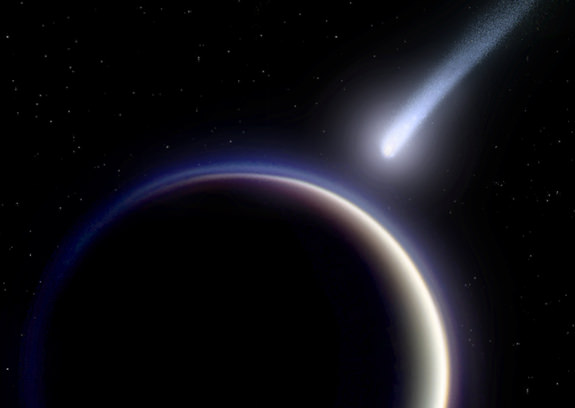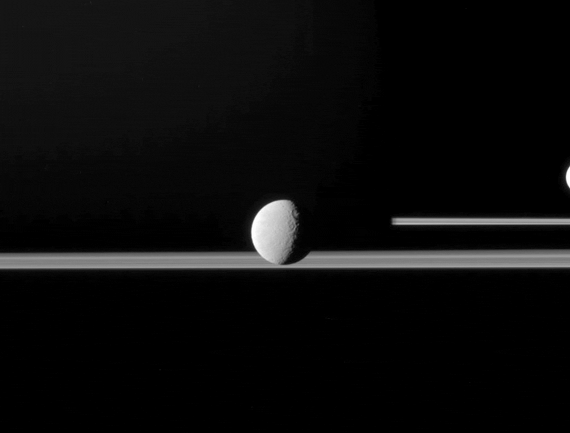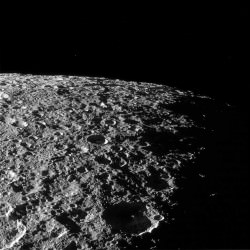[/caption]
Titan is making news again, this time with Cassini images from 2010 showing a storm nearly as big as Texas. Jonathan Mitchell from UCLA and his research team have published their findings which help answer the question:
What could cause such large storms to develop on a freezing cold world?
For starters, the huge arrow isn’t a cosmic detour sign reminding us to “Attempt No Landings” on Jupiter’s moon Europa.
In the study by Mitchell and his team, a model of Titan’s global weather was created to understand how atmospheric waves affect weather patterns on Titan. During their research, the team discovered a “stenciling” effect that creates distinct cloud shapes, such as the arrow-shaped cloud shown in the Cassini image above.
“These atmospheric waves are somewhat like the natural, resonant vibration of a wine glass,” Mitchell said. “Individual clouds might ‘ring the bell,’ so to speak, and once the ringing starts, the clouds have to respond to that vibration.”
Titan is the only other body in the solar system (aside from Earth) known to have an active “liquid cycle”. Much like Titan’s warmer cousin Earth, the small moon has an atmosphere primarily composed of Nitrogen. Interestingly enough Titan’s atmosphere is roughly the same mass as Earth’s and has about 1.5 times the surface pressure. At the extremely low temperatures on Titan, hydrocarbons such as methane appear in liquid form, rather than the gaseous form found on Earth.
With an active liquid both on the surface and in the atmosphere of Titan, clouds form and create rain. In the case of Titan, the rain on the plain is mainly methane. Water on Titan is rock-hard, due to temperatures hovering around -200 c.
Studies of Titan show evidence of liquid runoff, rivers and lakes, further emphasizing Titan’s parallels to Earth. Researchers believe better understanding of Titan may offer clues to understanding Earth’s early atmosphere. In another parallel to earth, the weather patterns on Titan created by the atmospheric waves can create intense rainstorms, sometimes with more than 20 times Titan’s average seasonal rainfall. These intense storms may cause erosion patterns that help form the rivers seen on Titan’s surface. Mitchell described Titan’s climate as “all-tropics”, basically comparing the weather to what is usually found near Earth’s equator. Could these storms be Titan’s equivalent of monsoon season?
Mitchell stated “Titan is like Earth’s strange sibling — the only other rocky body in the solar system that currently experiences rain”. Mitchell also added, “In future work, we plan to extend our analysis to other Titan observations and make predictions of what clouds might be observed during the upcoming season”.
The research was published Aug. 14 in the online edition of the journal Nature Geoscience .
If you’d like to learn more about the Cassini mission, visit: http://saturn.jpl.nasa.gov/index.cfm

